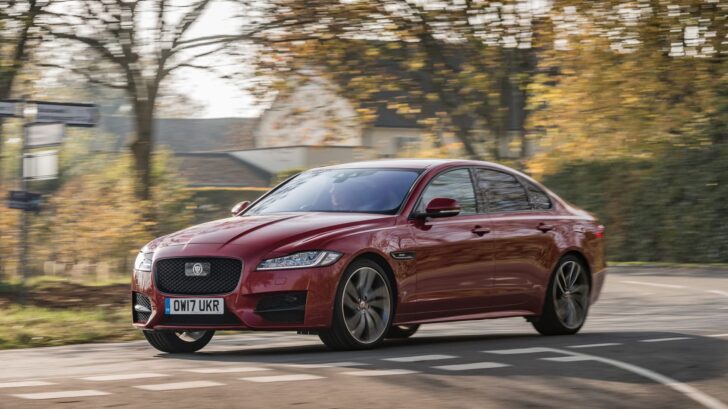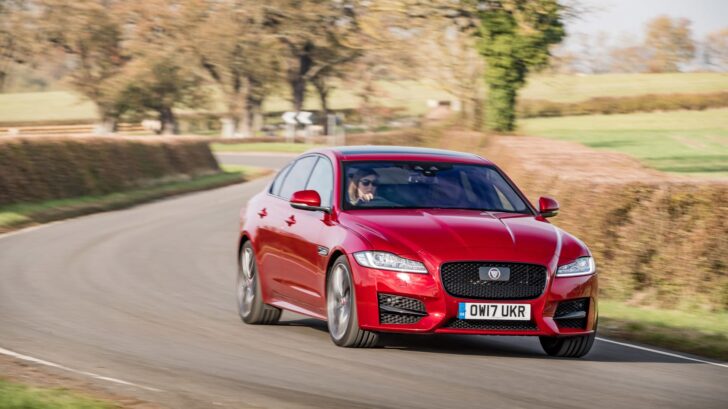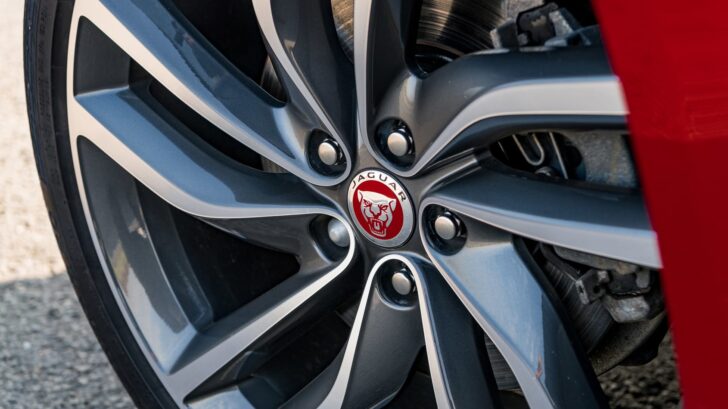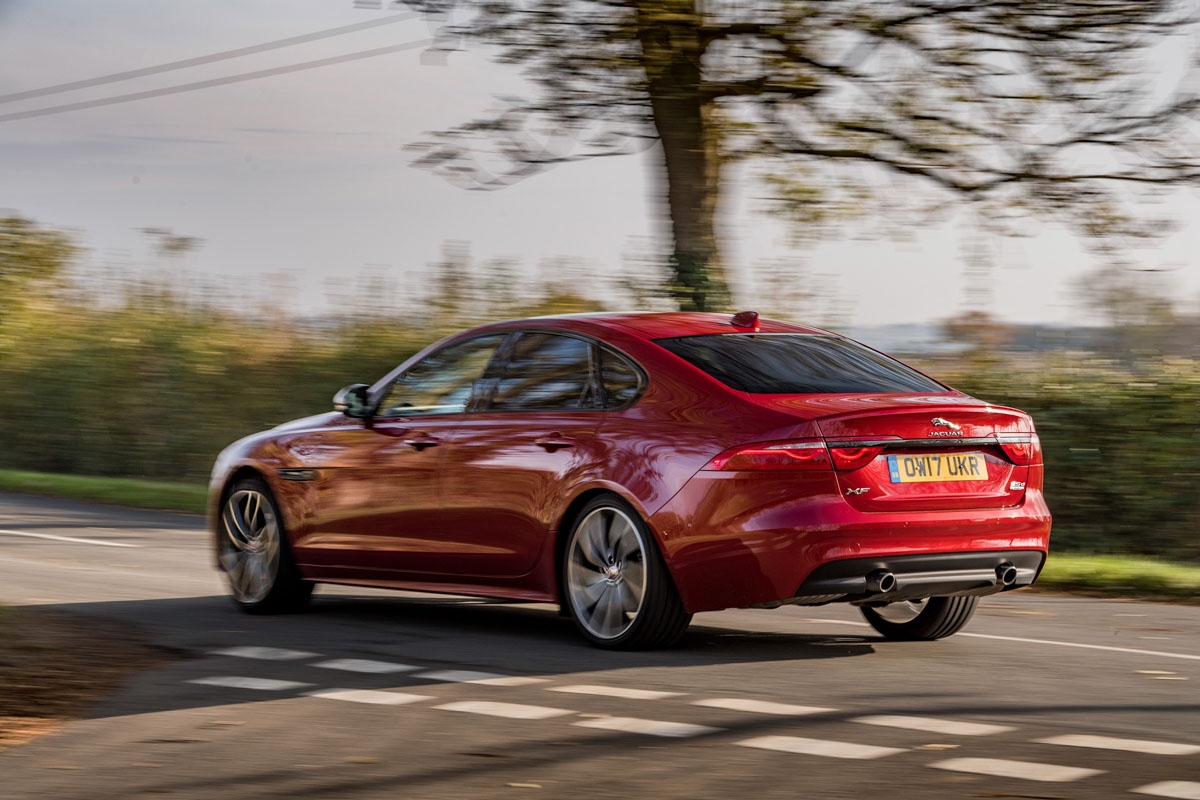| Fluid chassis, responsive steering and impressive refinement | ||
| Four-cylinder engine a little uncouth for an executive car… |
WLTP shake-ups mean several vehicle line-ups are in a state of flux at the moment. Jaguar is one such company, having entirely ditched petrol variants of the flagship XJ saloon, and dropped six-cylinder petrol engines from the XE and XF ranges.
That leaves the four-cylinder, 296bhp Ingenium petrol as the XF’s current range-topper. Tested here in R-Sport trim, does it still deliver a true Jaguar experience?
Engine, transmission and 0-100 time
The XF range has been consolidated into a pair of 2-litre four-cylinder units and a 3-litre turbocharged V6 diesel. Here we’re driving the most potent four-pot petrol, attached as standard (in 2018 model year trim) to an eight-speed ZF automatic transmission and all-wheel drive.
The 2-litre’s peak power output of 296bhp is delivered at 5500rpm, while 295lb ft of torque is also available from 1500rpm. On paper that results in a 5.8sec 0-100kph run and 250kph, and on the road it feels good for the former at least, putting its power down cleanly and pulling insistently through the gears.


Technical highlights?
Like the majority of Jaguar’s range the XF uses an aluminium monocoque structure, and has become something of a running gag. This doesn’t so much make the XF lightweight as it does less heavy than it might be were the company still using steel – at 1715kg, the XF R-Sport with the 296bhp four-cylinder and all-wheel drive is only 20kg lighter than a six-cylinder BMW 540i xDrive M Sport made from steel.
What’s it like to drive?
For all the XF’s lack of visual character or interior surprise-and-delight features, it’s thankfully still a satisfying car to drive, with a natural fluidity to its chassis that probably just about pips the BMW 5-series and Mercedes-Benz E-class and is several paces further ahead of an Audi A6.
The steering too plays a part in driver satisfaction. It responds keenly off-centre but it’s well weighted too, and that weight builds up naturally according to your demands on the chassis. There’s not much true feedback, but the steering feels natural enough that you shouldn’t mind much.

Price and rivals
The Jaguar XF R-Sport 300PS comes in at $57,780 on the road, which nets you such niceties as 18-inch alloy wheels, Xenon headlights, R-Sport styling elements, a 380W, 11-speaker sound system and eight-way adjustable leather seats. As tested, our car was wearing $1635-worth of 19-inch alloy wheels, a $1655 head-up display, upgraded infotainment with a 825W Meridian sound system and navigation coming in at $3480, and several other options besides – make no mistake, German brands aren’t the only ones who can squeeze additional high four-figure sums from you by the time you’ve left the showroom.
Closest rival on paper to the 300PS R-Sport is BMW’s four-cylinder 530i M Sport($58,907, though you’ll need the 540i xDrive M Sport at $68,453 to eclipse the Jag’s performance). Audi and Mercedes-Benz don’t currently offer similar petrol-powered models at this price point, though with the S6 and E53, both do field higher-performance petrols in their respective line-ups, albeit in the high-$65k to low-$75k range.
Jaguar probably pips all three at this market level for driver appeal but currently lacks a true high-performance XF, while all three Germans offer better cabins and more up-to-date technology.




